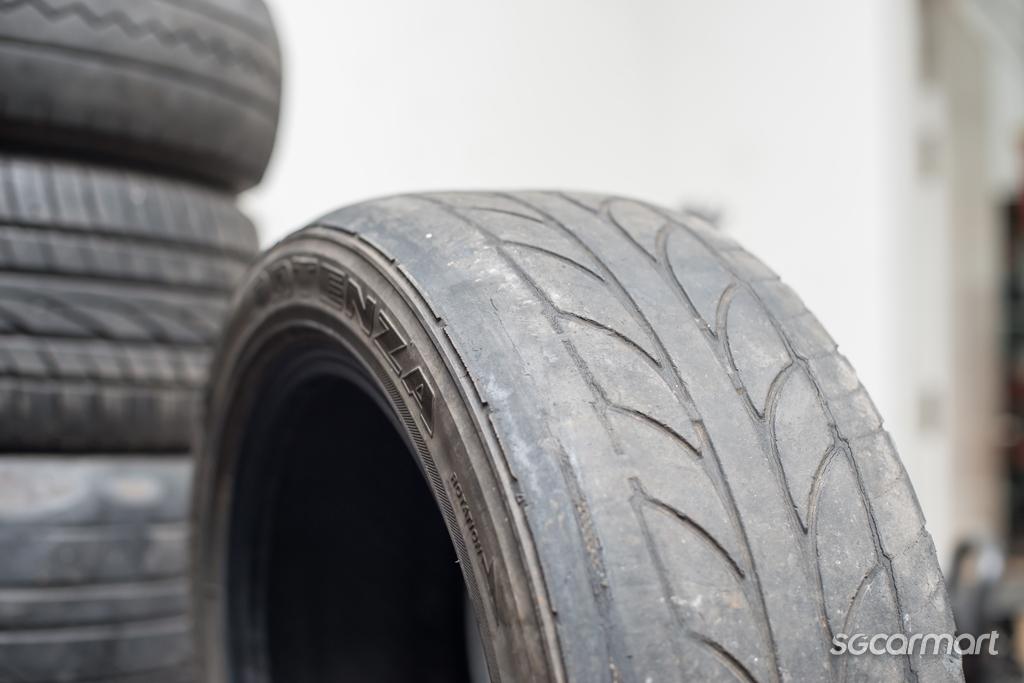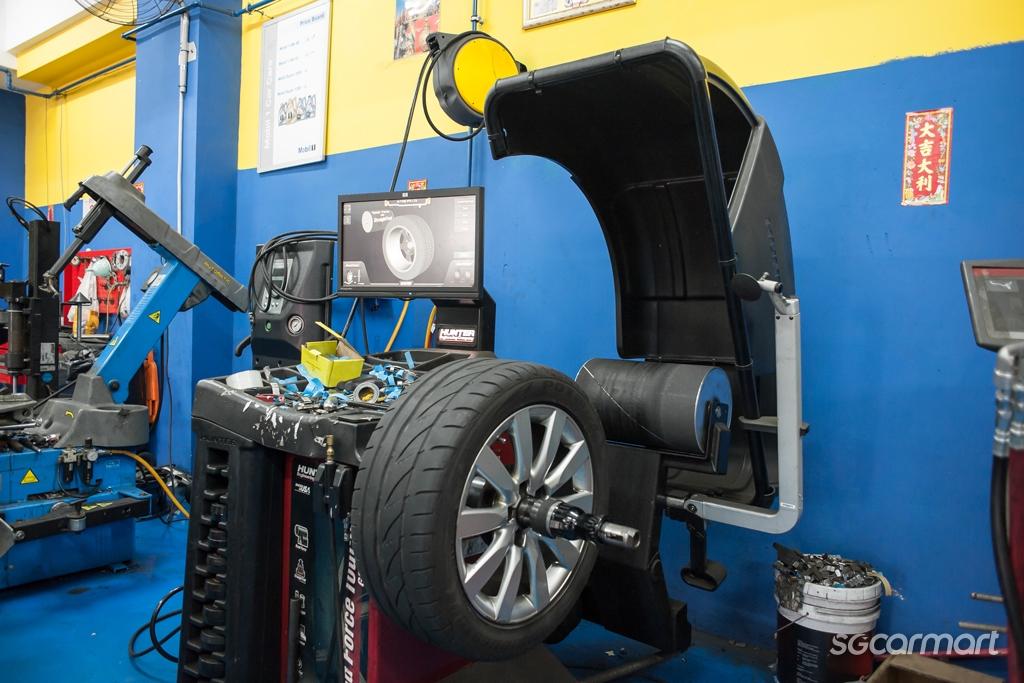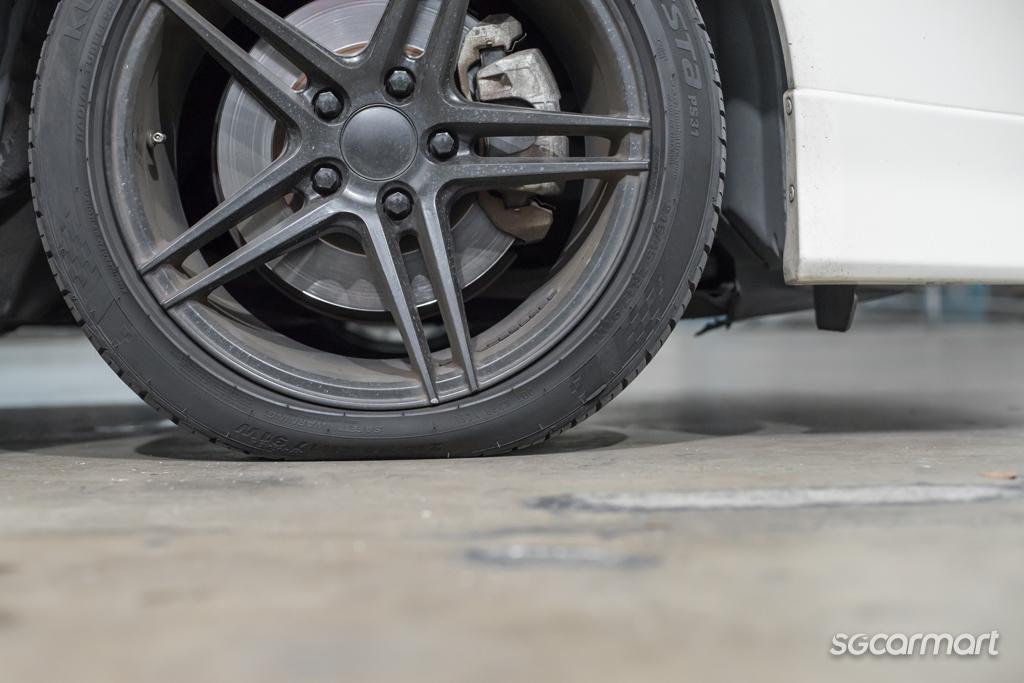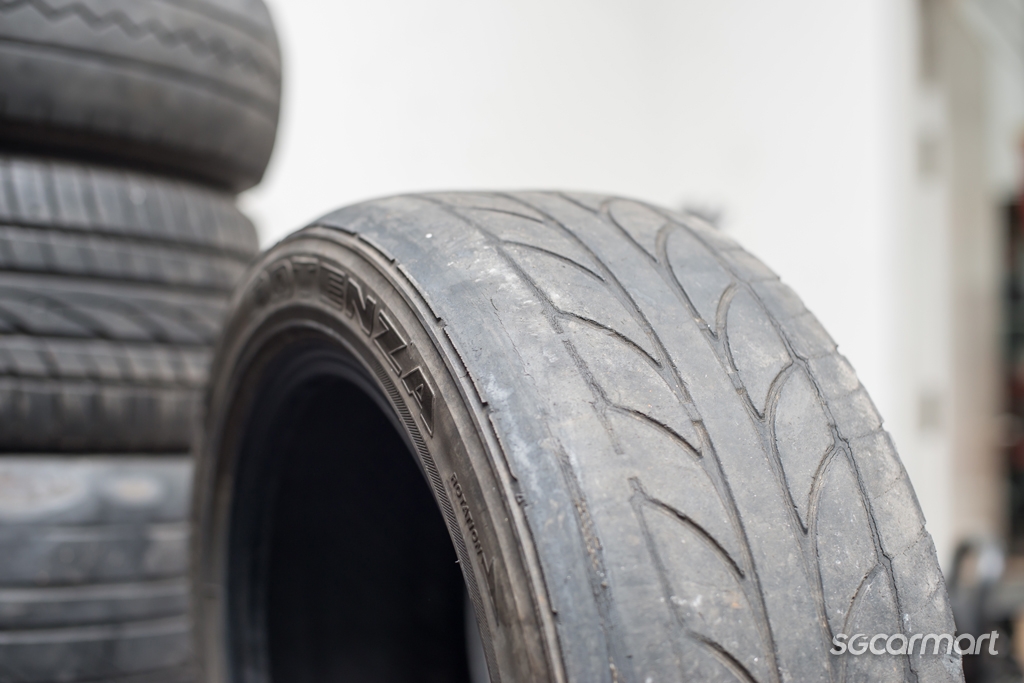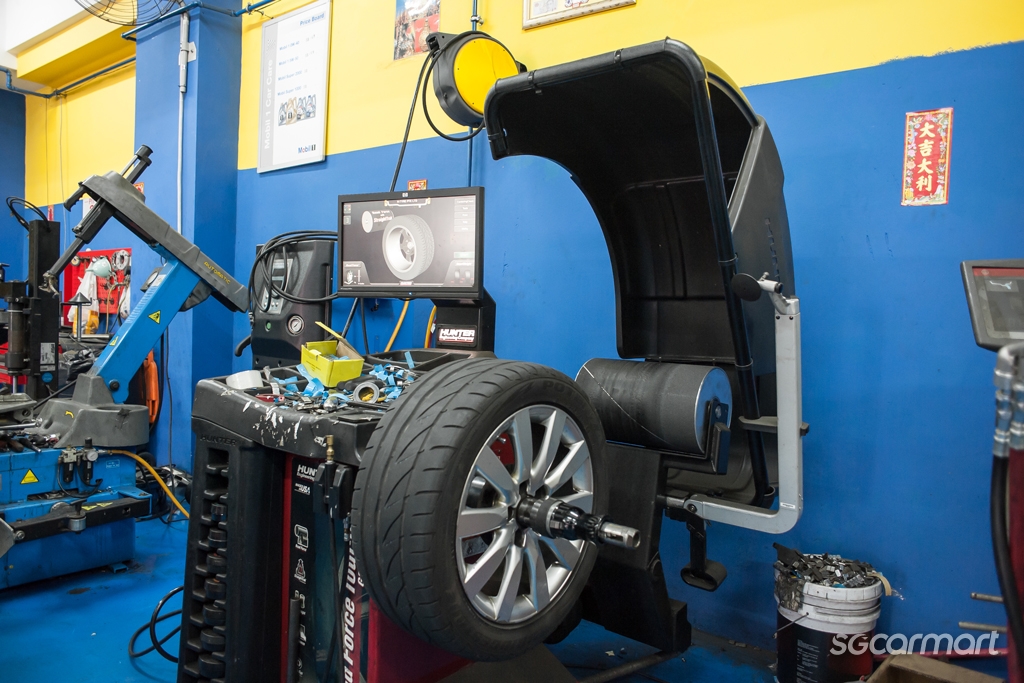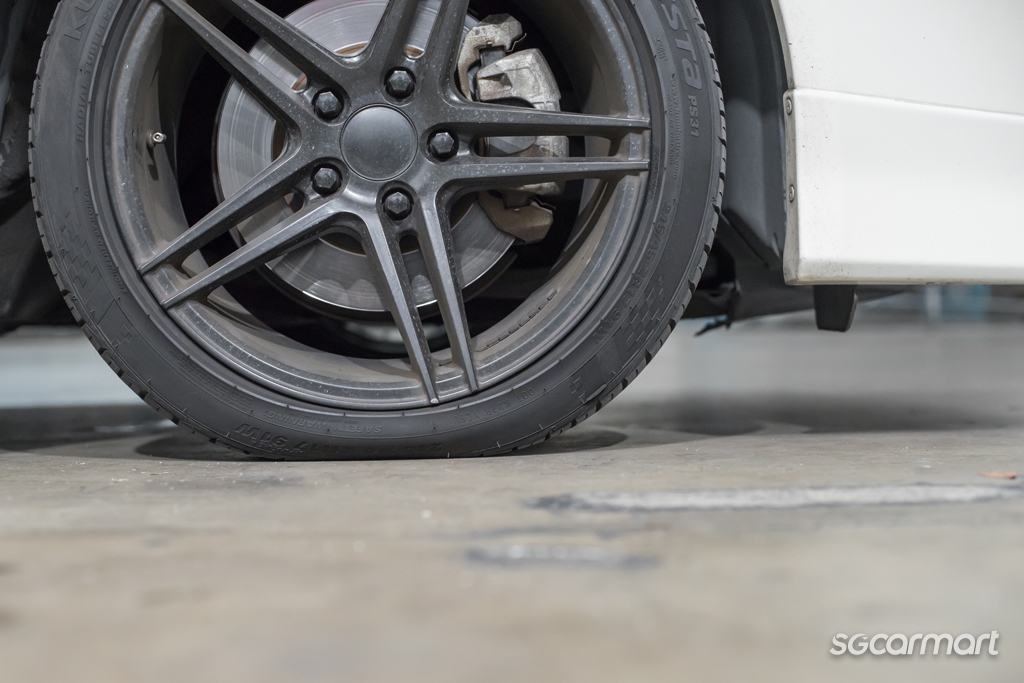5 signs that your wheels are misaligned
18 Aug 2023|27,564 views
If you've ever been to a tyre shop for a new set of tyres, chances are the establishment would have recommended that you get your car's wheel alignment checked.
In a nutshell, wheel alignment refers to how the wheels are aligned/positioned relative to the car, the road, and to each other. In layman's terms, wheel alignment helps ensure that the car tracks straight when the steering wheel is straight, and only turns when the steering wheel is turned.
Wheel alignment differs from car to car and must be adjusted accordingly. And you don't need to wait till it's time for a tyre change to get it done, because wheels can go out of alignment for various reasons. Here are the telltale signs that it's time to get it checked.
1. Your car drifts or pulls to one side
This is by far the most obvious sign that your car needs to have its wheels realigned. If you're driving on a straight road but find you need to constantly make steering corrections to keep the vehicle in lane, your alignment is probably off.
Said corrections could be very minor and even go unnoticed. One way to check is to momentarily release your grip on the steering wheel while you are driving in a straight line, while maintaining a constant speed in the middle lane.
If your car does not pull or slowly drift to one side, then your wheel alignment is most likely okay.
2. An off-centre steering wheel
Another sign of misaligned wheels is an off-centre steering wheel. Going with the previous example, if you're driving on a straight road but need to keep the steering wheel slightly turned to the left or right to keep the vehicle going straight, the wheel alignment is off.
Though rare, it is possible that the steering wheel itself is somehow misaligned. But the most obvious culprit is misaligned wheels pulling the vehicle to one side, which necessitates keeping the steering wheel turned at a slight or in more severe cases, acute angle. Get the alignment fixed right away as this increases the risk of an accident.
3. Uneven tyre wear
Each of your car's tyres are subjected to varying loads. The front tyres, for instance, are tasked with steering, so, if you have a front-wheel drive car, they are subject to extra wear.
Conversely, a rear-wheel drive car, especially a powerful one, typically wears the rear tyres out faster than the front ones. If the tyres are all the same size, regularly rotating them will help them wear evenly.
However, if you spot that one or more of your tyres experiencing more wear on the shoulders than the centre of the contact patch, the wheel alignment is probably off. Uneven wear means the grip is also uneven, which can be dangerous in wet or slippery conditions.
4. Vibrations from the steering wheel
It is abnormal to feel vibrations from the steering wheel if you're driving on a relatively smooth stretch of road. One of the biggest reasons for this is an unbalanced wheel or wheels, which would cause them to wobble at certain speeds.
But if you're certain that your wheels are balanced, then the probable culprit is misaligned wheels. Get this rectified as soon as you can to prevent this issue from becoming a more serious and potentially costlier problem to fix.
Under-inflated tyres not only result in higher fuel consumption - they can also result in misaligned wheels
5. Poorer fuel economy
Fuel economy is affected by a multitude of factors ranging from traffic conditions to driving style to how well (or unwell) your engine is. However, if you have a predictable schedule, that means you have a rough idea of far you typically drive before needing to pump petrol.
Hence, unless you've been spending more time driving in peak hour traffic or running more errands in a week, your fuel consumption should be consistent. If it starts creeping upwards and you can't fathom why, misaligned wheels could be the cause.
Looking for similar articles? These stories may interest you
Why wheel alignment is probably the best $50 you can spend on your car
Wobbling wheels - what's causing them?
Wheel alignment issues: What causes misalignment?
If you've ever been to a tyre shop for a new set of tyres, chances are the establishment would have recommended that you get your car's wheel alignment checked.
In a nutshell, wheel alignment refers to how the wheels are aligned/positioned relative to the car, the road, and to each other. In layman's terms, wheel alignment helps ensure that the car tracks straight when the steering wheel is straight, and only turns when the steering wheel is turned.
Wheel alignment differs from car to car and must be adjusted accordingly. And you don't need to wait till it's time for a tyre change to get it done, because wheels can go out of alignment for various reasons. Here are the telltale signs that it's time to get it checked.
1. Your car drifts or pulls to one side
This is by far the most obvious sign that your car needs to have its wheels realigned. If you're driving on a straight road but find you need to constantly make steering corrections to keep the vehicle in lane, your alignment is probably off.
Said corrections could be very minor and even go unnoticed. One way to check is to momentarily release your grip on the steering wheel while you are driving in a straight line, while maintaining a constant speed in the middle lane.
If your car does not pull or slowly drift to one side, then your wheel alignment is most likely okay.
2. An off-centre steering wheel
Another sign of misaligned wheels is an off-centre steering wheel. Going with the previous example, if you're driving on a straight road but need to keep the steering wheel slightly turned to the left or right to keep the vehicle going straight, the wheel alignment is off.
Though rare, it is possible that the steering wheel itself is somehow misaligned. But the most obvious culprit is misaligned wheels pulling the vehicle to one side, which necessitates keeping the steering wheel turned at a slight or in more severe cases, acute angle. Get the alignment fixed right away as this increases the risk of an accident.
3. Uneven tyre wear
Each of your car's tyres are subjected to varying loads. The front tyres, for instance, are tasked with steering, so, if you have a front-wheel drive car, they are subject to extra wear.
Conversely, a rear-wheel drive car, especially a powerful one, typically wears the rear tyres out faster than the front ones. If the tyres are all the same size, regularly rotating them will help them wear evenly.
However, if you spot that one or more of your tyres experiencing more wear on the shoulders than the centre of the contact patch, the wheel alignment is probably off. Uneven wear means the grip is also uneven, which can be dangerous in wet or slippery conditions.
4. Vibrations from the steering wheel
It is abnormal to feel vibrations from the steering wheel if you're driving on a relatively smooth stretch of road. One of the biggest reasons for this is an unbalanced wheel or wheels, which would cause them to wobble at certain speeds.
But if you're certain that your wheels are balanced, then the probable culprit is misaligned wheels. Get this rectified as soon as you can to prevent this issue from becoming a more serious and potentially costlier problem to fix.
Under-inflated tyres not only result in higher fuel consumption - they can also result in misaligned wheels
5. Poorer fuel economy
Fuel economy is affected by a multitude of factors ranging from traffic conditions to driving style to how well (or unwell) your engine is. However, if you have a predictable schedule, that means you have a rough idea of far you typically drive before needing to pump petrol.
Hence, unless you've been spending more time driving in peak hour traffic or running more errands in a week, your fuel consumption should be consistent. If it starts creeping upwards and you can't fathom why, misaligned wheels could be the cause.
Looking for similar articles? These stories may interest you
Why wheel alignment is probably the best $50 you can spend on your car
Wobbling wheels - what's causing them?
Wheel alignment issues: What causes misalignment?


